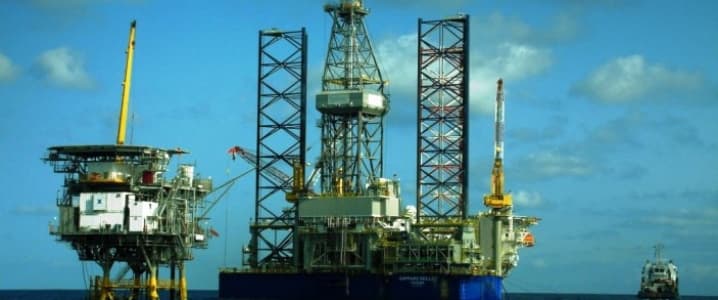Crude oil prices are slumping, and everyone is clamoring to know: how far can oil fall? Is this a buying opportunity, or is the selloff likely to worsen?
Bloomberg recently reported a large options trade worth about $7 million. Around 14000 August $39 puts were traded, which was more than 20 times the existing Open Interest at that level.

(Click to enlarge)
The buyers of the put will only start to breakeven and earn a profit if crude oil prices fall below $39 per barrel within the expiry date of the options, which would require a further fall of 15 percent.
But is this likely? Can crude oil fall that much?
For four months, crude oil traders waited patiently to see the results of the OPEC production cuts. The compliance from OPEC and its allies has been much better than market expectations. However, the U.S. shale oil producers had other plans, surprising everyone by adding oil rigs at a record pace and increasing production.
The latest report by Baker Hughes shows that the oil rig count has reached 703, a 122 percent increase from the lows of 316 in May 2016.
"U.S. rig rates have now increased to levels that will allow production growth," said James Davis, upstream analyst at consultancy FGE, reports CNBC.
As a result, the supply glut has been slow to subside, which is seen in the large crude oil inventory levels.
For the week ending April 28, 2017, the U.S. crude oil inventory was 527.8 million barrels. Its fall has been precariously slow from the all-time highs of 535.5 million barrels reached in the week ending March 31, 2017. What this shows is that the current OPEC cuts are not enough to balance the markets. Related: Saudis Set To Cut June Crude Oil Exports To Asian Markets
As a result, expectations arose that OPEC may have to deepen their production cuts along with extending them into the second half of 2017. However, on the news that OPEC members and their allies were unlikely to deepen cuts, the slide steepened, because the markets believe that the current level of cuts is insufficient to balance the markets.
The breakdown from the trendline also ignited technical selling, because this was a critical support.
So, is the fall a buying opportunity? Yes, this could be a buying opportunity, but it is a risky trade indeed.
After the fall, the verbal intervention came from the oil minister of Saudi Arabia, Khalid Al-Falih.
“Based on the consultations I have had with participating members I am rather confident the agreement will be extended into the second half of the year and possibly beyond,” Al-Falih said at the Asia Oil and Gas Conference in Kuala Lumpur on Monday. “The producer coalition is determined to do whatever it takes to achieve our target of bringing stock levels back to the five-year average,” reports Bloomberg.
The extension of production cuts for the second half of the year is almost a certainty. Not only that, Bloomberg reported on May 08 that ministers from a few OPEC nations have discussed deepening production cuts. Related: OPEC Confident In U.S. Shale’s Lack Of Longevity
OPEC is unlikely to go down without a fight. In the upcoming meeting, OPEC will attempt to surpass market expectations, to allow for more time to rebalance the crude oil market. It will no longer be sufficient for OPEC to announce an extension, because this is what the market already expects. The market wants more. And if OPEC fails to shock markets by beating expectations on May 25, the market participants will be disappointed, and oil is likely to fall further.
That is as far as the fundamentals are concerned.
How does the technical picture look?

(Click to enlarge)
Crude oil had formed a bullish ascending triangle pattern whose trendline support was at $47. Once prices broke below this trendline support, the fall accelerated. The failure of a bullish pattern is a negative sign. However, the RSI is in the oversold zone. On the four previous occasions (marked by down arrows on the chart) when the RSI entered the oversold zone, crude oil prices saw a decent rally.
$47.20 on the upside and $43.76 are the two critical levels to watch. If crude oil prices close above the trendline, they are likely to rally to $51 levels. On the other hand, a breakdown of the recent swing low of $43.76 will push prices towards $42.5 and $39.
By Rakesh Upadhyay for Oilprice.com
More Top Reads From Oilprice.com:
- Will Hedge Funds Drive Oil Prices Even Lower?
- Oklahoma Taking Advantage Of Mexico’s Oil Boom
- A Sobering Look At The Future Of Oil


















